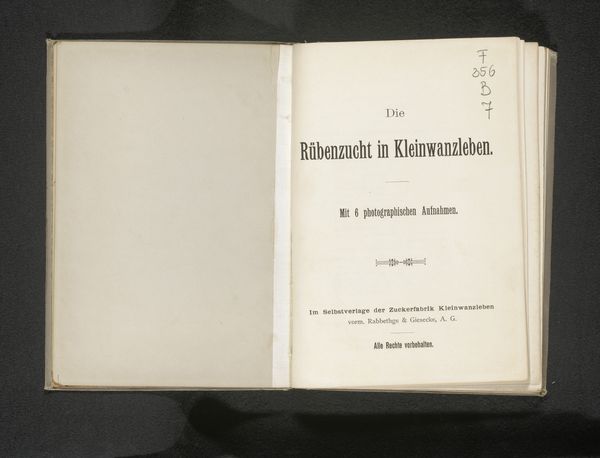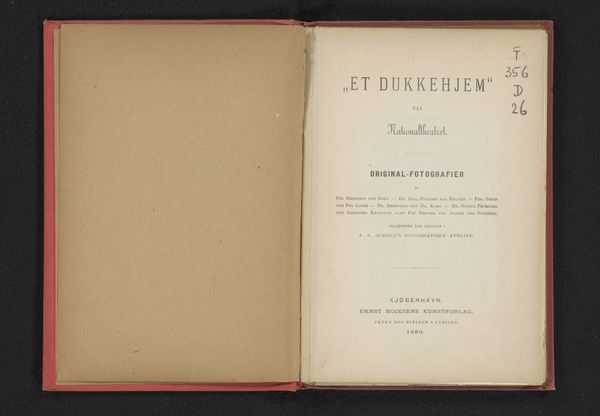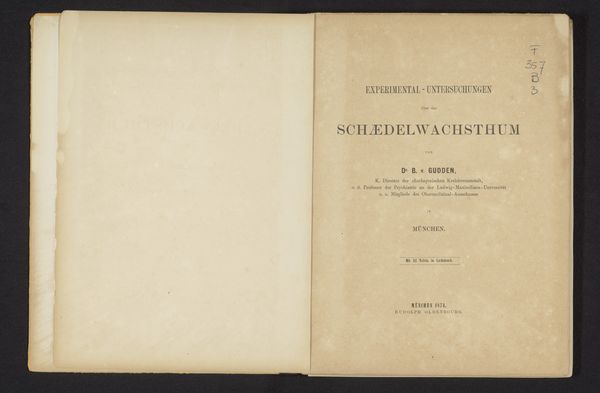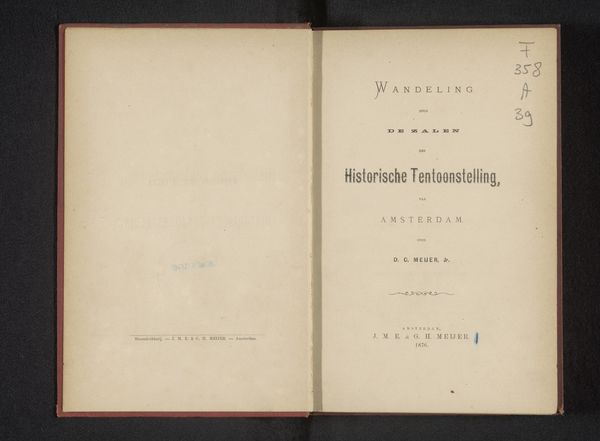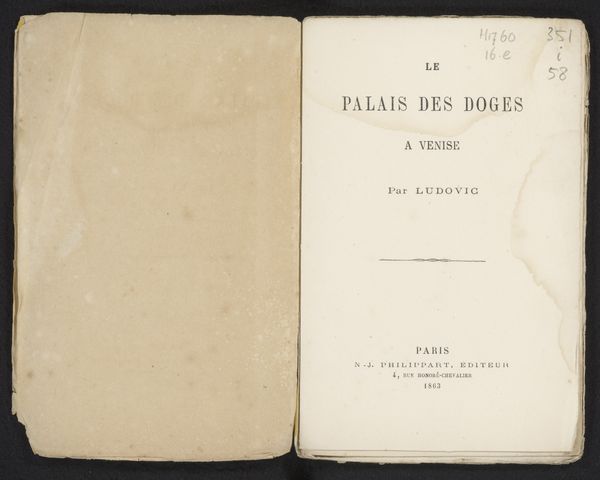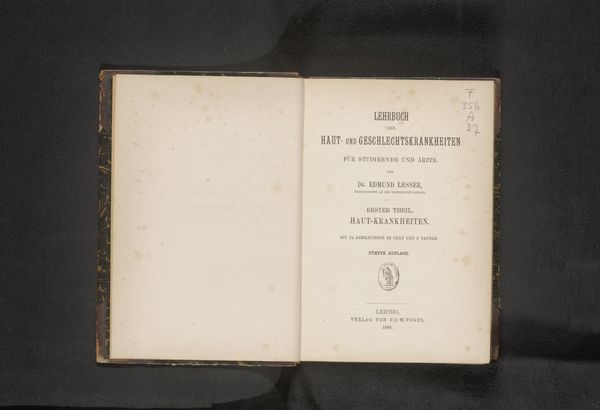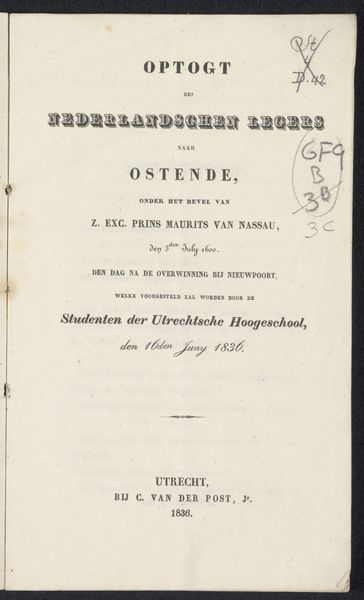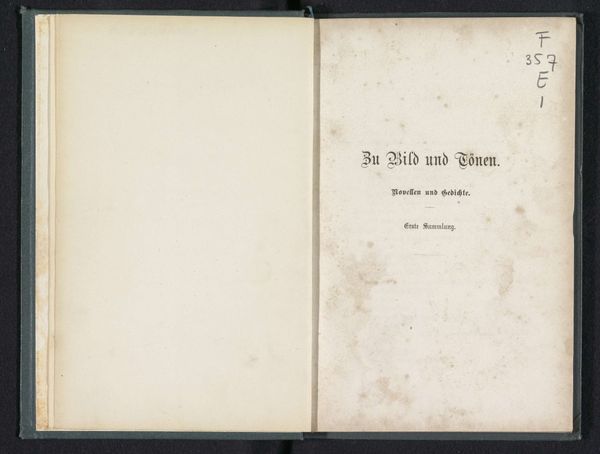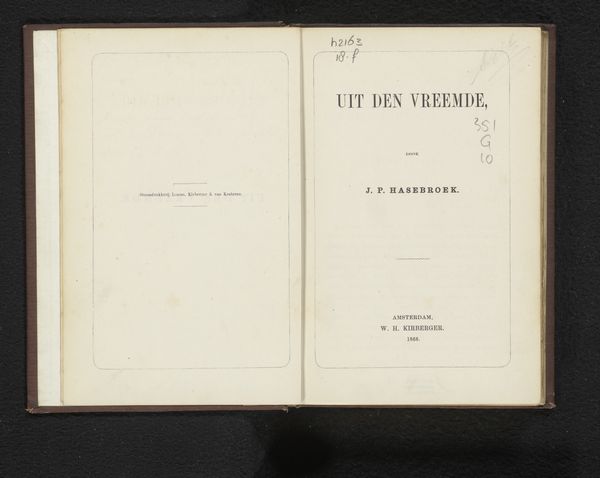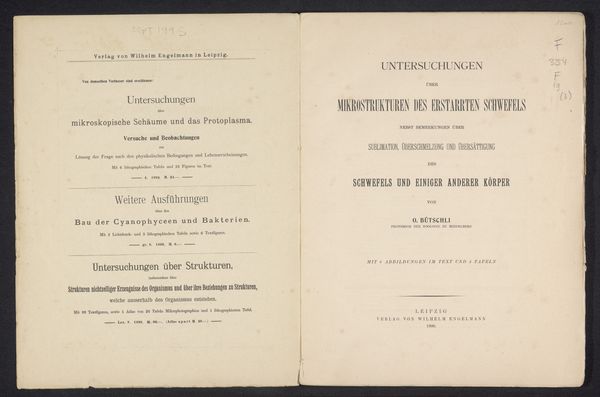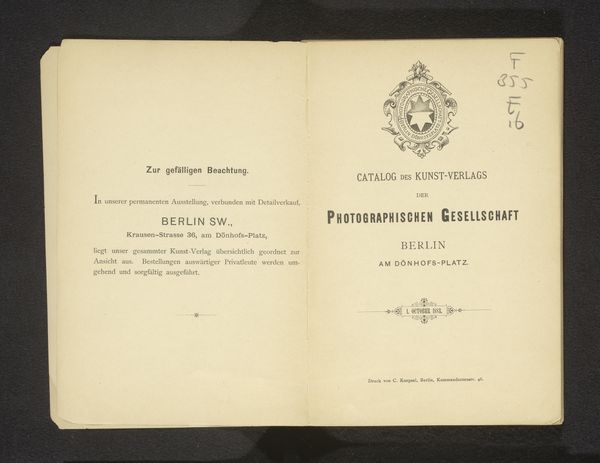
Über Fäulnissbacterien und deren Beziehungen zur Septicämie ein Beitrag zur Morphologie der Spaltpilze 1885
0:00
0:00
print, paper
# print
#
book
#
paper
#
historical font
Dimensions: height 257 mm, width 175 mm, thickness 12 mm
Copyright: Rijks Museum: Open Domain
Curator: At first glance, it feels… austere. Maybe a little bit melancholy, like peering into a forgotten library. Editor: What you're seeing here is the cover of a print, on paper, showcasing the publication by Gustav Hauser in 1885: "Über Fäulnissbacterien und deren Beziehungen zur Septicämie ein Beitrag zur Morphologie der Spaltpilze." That's "On putrefaction bacteria and their relationship to septicemia, a contribution to the morphology of fission fungi," for those of us without a grasp of 19th-century German. Curator: Oh, I love it even more knowing what it is! Bacteria… putrefaction… There’s a stark poetry in reducing these invisible, powerful forces to the printed word. And the typeface, with its almost gothic quality, heightens that drama, right? Like an ancient alchemical text. Editor: The gothic font is a wonderful observation—historical fonts carry specific weight. Think about how they’ve been used and who controlled the printing presses, right? Here, we're literally looking at the language used to shape our understanding of scientific development and public health. Consider how these terms - "septicemia", or blood poisoning - impact perceptions of contagion, especially at a time when germ theory was still gaining acceptance. Curator: Absolutely! There’s this tension. A scientific striving for clarity battling against the inherent messiness of… life, death, decay. The untouched side almost feels more modern somehow, whereas the inscription looks older with that very controlled text; the off-white shades also offer to different textural feelings. I can just imagine someone paging through this, trying to unlock these microbial secrets. Editor: Yes! And I find the handwritten date in the bottom right corner - 'FEB 1993', incredibly poignant. Someone, perhaps in a library or archive, handled this very item almost a century later! The marginalia and that aged paper whisper so much about the reception of knowledge. The knowledge in these pages surely had an impact on global power. Who had access to this information and how that impacted medicine is deeply interesting. Curator: It does make you wonder about the countless silent dialogues held between readers and these pages across time, each seeking a different kind of meaning. That interplay of science and its societal implications. And I think that’s ultimately where its enduring beauty lies. Editor: A fascinating confluence indeed, bringing into focus that even the most ‘objective’ scientific work emerges from, and returns to, a very specific cultural landscape.
Comments
No comments
Be the first to comment and join the conversation on the ultimate creative platform.
